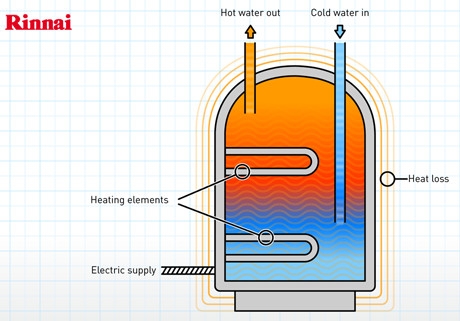Water is heated by element submerged in a self-contained, small, wall-mounted tank.
What are electric water heaters?
Electric water heaters work on a different principle as there is no burner, and no heat exchanger, no flue system is required. Electric water heaters typically employ two immersion elements. One is near the top of the tank and the other is near the bottom.
These elements provide the heat and, for the most part, the water configuration is the same as on a gas or oil system. Cold water is introduced near the bottom of the tank and hot water is drawn off near the top. This cold water near the bottom of the tank will activate the thermostat for the lower element. The lower element will come on and heat the incoming cool water. The upper element will still be surrounded with hot water and will be satisfied.
In a continuous flow system cold water entering the unit triggers a PCB, which in turn powers up the heating element. This sequence of events takes longer with electricity because it takes time for the elements to warm up, whereas the effect of a gas flame is instant.
How do electric water heaters work?
In a tank, cold water enters the chamber and rises to the top as it heats up. Unlike with gas, the heating element is inside the tank.
In a continuous flow system cold water entering the unit triggers a PCB, which in turn powers up the heating element. This sequence of events takes longer with electricity because it takes time for the elements to warm up, whereas the effect of a gas flame is instant.
| Advantages | Disadvantages |
|---|---|
| Available as storage and continuous flow | Recovery rates for storage are poor |
| No products of combustion so no chance of any leakage of harmful gases | Flow rates not as good as gas counterparts |
| Electricity more available than gas | If there is a breakdown in insulation it could be fatal |
| Hot water delivery temperature will not be accurate | |
| Not as reliable as gas counterparts | |
| Difficult to maintain | |
| Energy inefficient operation compared to competitive products |

